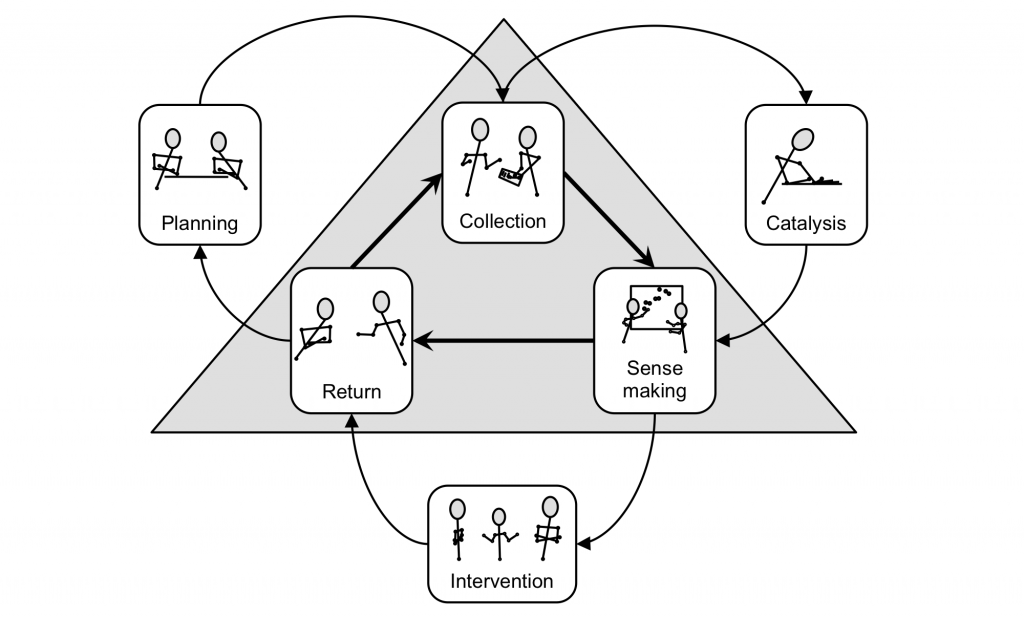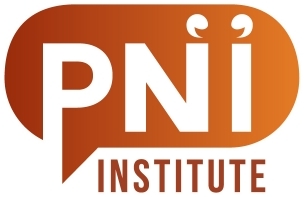Sometimes one gets an opportunity to use a channel to put things forward to an audience one never thought one would meet. Such an event happened last week when I was a guest for the second time in the GloComNet webinar series on Complexity and Uncertainty. The webinar is recorded in a brand new TV studio which can livestream 4K content. The webinars recordings have audiences up to 1500 people, so it was a real honour to be a guest.
The topic of this fifth episode was storytelling and complexity, which seems odd at first, since storytelling to most people is primarily known as a business method to deliver a message to an audience. Lately, Storytelling has almost replaced PowerPoint on congress podia. And today’s ads on TV or the internet must be “Stories” else – the marketing experts say – nobody takes them seriously (which I doubt, but alas).
In our conversation, though (which was perfectly led by Conny Dorrestijn and featured prof. Lex Hoogduin as a guest as well), storytelling was described as “the act of sharing stories between normal people”. So it is that exchange of experiences we all know when we are around a coffee machine or at a party. After that brilliant start, we discussed several topics that I’m not going to spoil here, as you can see for yourself below.
I hope you enjoyed watching it and are now familiar with the two main forms of storytelling: conversational (around the campfire or table, or via a StoryPoint) and performance-based (on stage, in films, on websites, in promotions, advertisements, etc.).
In the webinar we quickly focussed on the first (conversational) form and its applications that help people understand, make sense, and make better decisions in the face of complex and uncertain aspects of situations. Using examples of various applications, we showed how participatory narrative methods can replace many of the current practices in organisations, practices that are often based in linear thinking and management of ordered (production) processes.
So the title of this blog that “storytelling approaches are rapidly becoming the new normal in handling complex challenges in organisations and societies” definitely points at its adoption for both communication and management purposes, which is great. Now the question is how this relates to PNI. For that, I will go back to Cynthia’s original PNI Cycles from her Working with Stories book:

Anyone immediately notices that storytelling is not mentioned. But it is there! Both forms discussed in the video are there:
- Conversational Storytelling is in Collection, where stories are shared via a myriad of approaches and methods and collected for further use in yet another myriad of (sensemaking) methods.
- (Business) Storytelling is in Intervention and Return. Or better, it’s one of the methods available for intervention and return, methods that range from simply publishing all stories and insights back into the communities that shared them, to broadcasting carefully constructed stories in order to precisely intervene with the current status of the organisation or audience.
It might help to explain that in Collection the focus is more on storyTELLING, while during Intervention and Return the focus is more on STORYtelling. That is not the whole story :-), but I hope the difference between them is clear by now. It certainly works when presenting PNI-based projects to prospects. For example, we often use StorySharing instead of Collection for such an audience.
We noticed that such rewording of PNI phases helps when selling PNI projects to clients. After all, the PNI image above was created for PNI practitioners, not prospects, customers or users. In the next blog, I will talk a bit more how we present PNI to customers and how we reworded the PNI steps for commercial activities.
Photo credits: Brian Smithson (Old Geordie)


Hi Stephan, thanks for your comment and question about how insights in the sensemaking sessions transduce into narratives fit for wider use.
Most of the answer to this is that in the sensemaking session after insights emerge, the session should gradually turn towards “change”. From page 338 onwards in http://www.workingwithstories.org Cynthia described the two last steps of sensemaking: facilitating convergence and facilitating change. The goal of this last step is to decide upon which changes the group agree on and/or which uncertainties mus be taken into account (so leading more towards experiments more than).
The most productive sensemaking sessions include decisions on how exactly the interventions will be carried out. There is a wide variety of options. Chapter Thirteen, Narrative Intervention of the same book described a few, including participatory theatre (Theatre of the Oppressed) and Re-authoring conversation. These two are examples of what you seem to be looking for. These are ways to create novel stories / interventions that can be conveyed to wider audiences.
Finally, please note that the intervention methods in mentioned book are all narrative methods. Cynthia writes in the introduction of the Intervention Chapter:
Many interventions might come about as a result of carrying out a PNI project. Policies might be changed; laws might be passed; data might be gathered; funding might be approved; groups might be formed; permissions might be granted. I will not write about any of those things in this chapter, because those things are beyond the scope of this book. I will only speak of narrative interven- tions, that is, actions whose purpose is to intervene in the flow of stories.
This means that, for example, (Business) Storytelling is only partly covered (Re-authoring conversation).
Hope this helps.
Hi Harold,
Good to see this story being shared here on the PNI community. I have a question about the transitions from sense-making to intervention and return. In my own work I’m experiencing more and more the need to ‘transduce’ insights from sense-making exercises into narratives that are fit for wider / other contexts for those that were involved in the sense-making process.
If you recognise what I’m descrbing there, do you know of any literature (perhaps related to this PNI community) about this transduction process? Some of my concerns are about mapping and representing insights with integrity whilst making use of narrative devices that are not present in the source narratives.
Hope I’m making sense 🙂